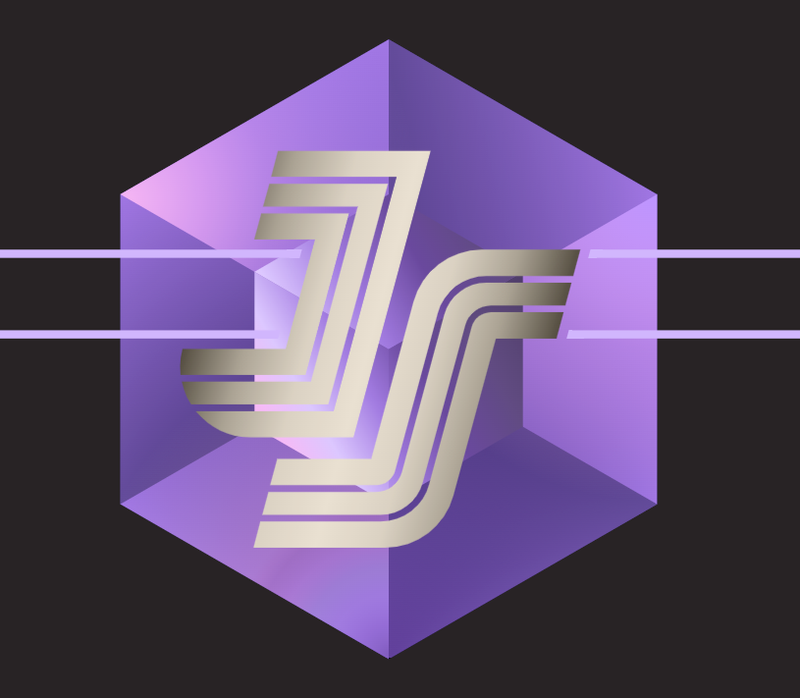DOMPurify  ·
·  ·
·  ·
· 

DOMPurify is a DOM-only, super-fast, uber-tolerant XSS sanitizer for HTML, MathML and SVG.
It's also very simple to use and get started with.
DOMPurify is written in JavaScript and works in all modern browsers (Safari, Opera (15+), Internet Explorer (10+), Edge, Firefox and Chrome - as well as almost anything else using Blink or WebKit). It doesn't break on IE6 or other legacy browsers. It either uses a fall-back or simply does nothing.
Our automated tests cover 16 different browsers right now. We also cover Node.js v4.0.0, v5.0.0 and v6.0.0, running DOMPurify on jsdom.
DOMPurify is written by security people who have vast background in web attacks and XSS. Fear not. For more details please also read about our Security Goals & Threat Model
What does it do?
DOMPurify sanitizes HTML and prevents XSS attacks. You can feed DOMPurify with string full of dirty HTML and it will return a string with clean HTML. DOMPurify will strip out everything that contains dangerous HTML and thereby prevent XSS attacks and other nastiness. It's also damn bloody fast. We use the technologies the browser provides and turn them into an XSS filter. The faster your browser, the faster DOMPurify will be.
How do I use it?
It's easy. Just include DOMPurify on your website.
Using the unminified development version
<script type="text/javascript" src="src/purify.js"></script>
Using the minified and tested production version (source-map available)
<script type="text/javascript" src="dist/purify.min.js"></script>
Afterwards you can sanitize strings by executing the following code:
var clean = DOMPurify.sanitize(dirty);
The resulting HTML can be written into a DOM element using innerHTML or the DOM using document.write(). That is fully up to you. But keep in mind, if you use the sanitized HTML with jQuery's very insecure elm.html() method, then the SAFE_FOR_JQUERY flag has to be set to make sure it's safe! Other than that, all is fine.
After sanitizing your markup, you can also have a look at the property DOMPurify.removed and find out, what elements and attributes were thrown out.
If you're using an AMD module loader like Require.js, you can load this script asynchronously as well:
require(['dompurify'], function(DOMPurify) {
var clean = DOMPurify.sanitize(dirty);
});
DOMPurify also works server-side with node.js as well as client-side via Browserify or similar translators. Node.js 0.x is not supported; either io.js or Node.js 4.x or newer is required.
npm install dompurify
const createDOMPurify = require('dompurify');
const jsdom = require('jsdom');
const window = jsdom.jsdom('', {
features: {
FetchExternalResources: false,
ProcessExternalResources: false
}
}).defaultView;
const DOMPurify = createDOMPurify(window);
const clean = DOMPurify.sanitize(dirty);
Strictly speaking, DOMPurify creates a document without a browsing context and you can replace it with const window = jsdom.jsdom().defaultView;, however, the longer case protects against accidental bugs in jsdom or DOMPurify.
Is there a demo?
Of course there is a demo! Play with DOMPurify
What if I find a bypass?
If that happens, you probably qualify for a juicy bug bounty! The fine folks over at FastMail use DOMPurify for their services and added our library to their bug bounty scope. So, if you find a way to bypass or weaken DOMPurify, please have a look at their website and the bug bounty info.
Some purification samples please?
How does purified markup look like? Well, the demo shows it for a big bunch of nasty elements. But let's also show some smaller examples!
DOMPurify.sanitize('<img src=x onerror=alert(1)//>');
DOMPurify.sanitize('<svg><g/onload=alert(2)//<p>');
DOMPurify.sanitize('<p>abc<iframe/\/src=jAva	script:alert(3)>def');
DOMPurify.sanitize('<math><mi//xlink:href="data:x,<script>alert(4)</script>">');
DOMPurify.sanitize('<TABLE><tr><td>HELLO</tr></TABL>');
DOMPurify.sanitize('<UL><li><A HREF=//google.com>click</UL>');
What is supported?
DOMPurify currently supports HTML5, SVG and MathML. DOMPurify per default allows CSS, HTML custom data attributes. DOMPurify also supports the Shadow DOM - and sanitizes DOM templates recursively. DOMPurify also allows you to sanitize HTML for being used with the jQuery $() and elm.html() methods but requires the SAFE_FOR_JQUERY flag for that - see below.
What about older browsers like MSIE8?
DOMPurify offers a fall-back behavior for older MSIE browsers. It uses the MSIE-only toStaticHTML feature to sanitize. Note however that in this fall-back mode, pretty much none of the configuration flags shown below have any effect. You need to handle that yourself.
If not even toStaticHTML is supported, DOMPurify does nothing at all. It simply returns exactly the string that you fed it.
Can I configure it?
Yes. The included default configuration values are pretty good already - but you can of course override them. Check out the /demos folder to see a bunch of examples on how you can customize DOMPurify.
var clean = DOMPurify.sanitize(dirty, {SAFE_FOR_JQUERY: true});
var clean = DOMPurify.sanitize(dirty, {SAFE_FOR_TEMPLATES: true});
var clean = DOMPurify.sanitize(dirty, {ALLOWED_TAGS: ['b']});
var clean = DOMPurify.sanitize(dirty, {ALLOWED_TAGS: ['b', 'q'], ALLOWED_ATTR: ['style']});
var clean = DOMPurify.sanitize(dirty, {FORBID_TAGS: ['style']});
var clean = DOMPurify.sanitize(dirty, {FORBID_ATTR: ['style']});
var clean = DOMPurify.sanitize(dirty, {ADD_TAGS: ['my-tag']});
var clean = DOMPurify.sanitize(dirty, {ADD_ATTR: ['my-attr']});
var clean = DOMPurify.sanitize(dirty, {ALLOW_DATA_ATTR: false});
var clean = DOMPurify.sanitize(dirty, {ALLOW_UNKNOWN_PROTOCOLS: true});
var clean = DOMPurify.sanitize(dirty, {RETURN_DOM: true});
var clean = DOMPurify.sanitize(dirty, {RETURN_DOM_FRAGMENT: true});
var clean = DOMPurify.sanitize(dirty, {RETURN_DOM_FRAGMENT: true, RETURN_DOM_IMPORT: true});
document.body.appendChild(clean);
var clean = DOMPurify.sanitize(dirty, {WHOLE_DOCUMENT: true});
var clean = DOMPurify.sanitize(dirty, {SANITIZE_DOM: false});
var clean = DOMPurify.sanitize(dirty, {KEEP_CONTENT: false});
var clean = DOMPurify.sanitize(dirty, {FORCE_BODY: true});
There is even more examples here, showing how you can run, customize and configure DOMPurify to fit your needs.
Hooks
DOMPurify allows you to augment its functionality by attaching one or more functions with the DOMPurify.addHook method to one of the following hooks:
beforeSanitizeElementsuponSanitizeElementafterSanitizeElementsbeforeSanitizeAttributesuponSanitizeAttributeafterSanitizeAttributesbeforeSanitizeShadowDOMuponSanitizeShadowNodeafterSanitizeShadowDOM
It passes the currently processed DOM node, when needed a literal with verified node and attribute data and the DOMPurify configuration to the callback. Check out the MentalJS hook demo to see how the API can be used nicely.
Example:
DOMPurify.addHook('beforeSanitizeElements', function(currentNode, data, config) {
return currentNode;
});
Continuous Integration
We are currently using Travis CI in combination with BrowserStack. This gives us the possibility to confirm for each and every commit that all is going according to plan in all supported browsers. Check out the build logs here: https://travis-ci.org/cure53/DOMPurify
You can further run local tests by executing npm test. The tests work fine with Node.js v0.6.2 and jsdom@8.5.0.
All relevant commits will be signed with the key 0x24BB6BF4 for additional security (since 8th of April 2016).
Security Mailing List
We maintain a mailing list that notifies whenever a security-critical release of DOMPurify was published. This means, if someone found a bypass and we fixed it with a release (which always happens when a bypass was found) a mail will go out to that list. This usually happens within minutes or few hours after learning about a bypass. The list can be subscribed to here:
https://lists.ruhr-uni-bochum.de/mailman/listinfo/dompurify-security
Feature releases will not be announced to this list.
Who contributed?
Several people need to be listed here!
@garethheyes and @filedescriptor for invaluable help, @shafigullin for breaking the library multiple times and thereby strengthening it, @mmrupp and @irsdl for doing the same.
Big thanks also go to @asutherland, @mathias, @cgvwzq, @robbertatwork, @giutro and @fhemberger!
Further, thanks @neilj and @0xsobky for their code reviews and countless small optimizations, fixes and beautifications.
Big thanks also go to @tdeekens for doing all the hard work and getting us on track with Travis CI and BrowserStack. And thanks to @Joris-van-der-Wel for setting up DOMPurify for jsdom and creating the additional test suite.
And last but not least, thanks to BrowserStack for supporting this project with their services for free and delivering excellent, dedicated and very professional support on top of that.






